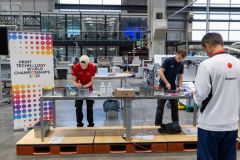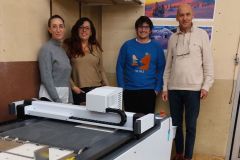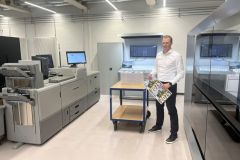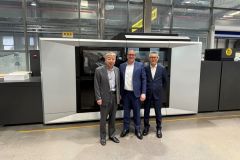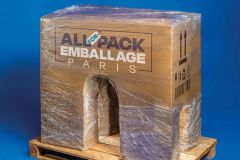Faced with increasing competition and squeezed margins, printers are looking to optimize their production workflows. It was against this backdrop that the Prinect User Days 2025, attended by over 300 Prinect workflow users, were held on January 16 and 17 at the German manufacturer Heidelberg's headquarters. The aim was to exchange views on technological advances and increased automation possibilities, notably via hybrid production.
Since its launch at Drupa 2016, the Prinect Production Manager has won over many print shops.
Kingraf, a Brazilian packaging printer with over 300 employees, has become the 2,500th user of this solution. "Our packaging processes require constant evolution. Prinect is an essential tool for meeting our customers' expectations." says Claudia Markowicz, Managing Director of Kingraf.
Booming short-run production drives hybrid production
The printing industry has to adapt to reduced production volumes and growing demand for short runs. Automation is becoming essential to maintain profitability.
Matteo Baschera, technical consultant at Galledia Print in Switzerland, stresses the importance of seamless workflow integration: "Prinect is the heart of our production. With Heidelberg, we benefit from support tailored to the automation of processes, from prepress to printing and finishing."
For its part, Mediaprint Solutions in Germany has completely transformed its production workflow by adopting a Smart Factory. Its "Order Connect" interface enables automated management of orders, from online receipt to final delivery. "Print smart âeuros or prepare to die" warns Dominik Haacke in his speech.
Data capture and flow control: towards total integration
German printer Meinders & Elstermann, which employs several hundred people, is a good example of the move towards integrated digital workflows.
Since 2018, its workflow has been based entirely on Prinect, enabling a reduction in prepress staff from 12 to 7. The company has also pioneered the use of the new "Data Capture" application to collect production data in postpress. This browser-based application replaces traditional data entry terminals and simplifies reporting.
Prinect Touch Free: total workflow automation
With the rise of short runs and shorter production cycles, job management is becoming increasingly complex. Heidelberg relies on Prinect Touch Free, a cloud software supported by artificial intelligence, to organize print orders and optimize resource utilization. Depending on the type of job, the system automatically determines the ideal printing process, whether offset on a Speedmaster press or digital printing on a Jetfire 50 or Versafire.
For Marco Rassfeld, Prepress Manager at Meinders & Elstermann, this automation will boost productivity and better exploit the capabilities of digital printing systems. "Prinect Touch Free will help us maximize our production and better manage growing volumes of short runs."
An unavoidable change for the sector
The move towards automated and hybrid processes has become a necessity to remain competitive. Between data management, increased connectivity between machines and artificial intelligence, printing plants must invest in intelligent workflows to maintain profitability. The next developments will undoubtedly involve even finer integration between prepress, printing and finishing, pushing the limits of automation ever further.





